Quit Paying Attention!
Muse Science Magazine for Kids
|September 2023
A REGULAR DOSE OF DAYDREAMING COULD BE GOOD FOR YOUR BRAIN.

Ready? Here's your assignment: Watch a series of white, single-digit numbers flash against a black computer screen, each visible for slightly longer than one second. Your job is to press one key when the number three appears, and to press a different key for all the other numbers. The computer will respond to your actions with "Correct!" after each appropriate key strike or "Incorrect!" if you make a mistake.
It's easy, right? And it's somewhat fun at first.

But several minutes into this, your thoughts will probably drift from striking the correct keys to wondering how much longer you'll have to keep doing this. Then you might begin thinking about why one of your friends said that weird thing during class today, or what you have planned for the weekend. Meanwhile, your fingers are still pecking away at the keys.
This switch from thinking about the computer task to thinking about other things is called mind wandering, or daydreaming. It's something we're all familiar with because we all do it.
Daydreaming gets you in trouble if you're caught doing it during class, or in the middle of a basketball game, or anything else that requires focus and quick thinking. But here, with the computer task and its flashing white numbers, daydreaming isn't such a bad thing. Experiments like this one have taught scientists when and why our minds naturally wander, as well as how daydreams can boost brainpower.

Where Is Your Head?
This story is from the September 2023 edition of Muse Science Magazine for Kids.
Subscribe to Magzter GOLD to access thousands of curated premium stories, and 10,000+ magazines and newspapers.
Already a subscriber? Sign In
MORE STORIES FROM Muse Science Magazine for Kids
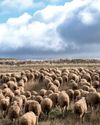
Muse Science Magazine for Kids
ANIMAL FIREFIGHTER TO THE RESCUE
Can animals help manage the risks of deadly wildfires?
3 mins
Muse July 2025: The Story Behind Wildfires

Muse Science Magazine for Kids
FIRE DANGER
WHY THE RISK OF WILDFIRES KEEPS GROWING
4 mins
Muse July 2025: The Story Behind Wildfires
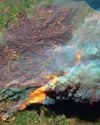
Muse Science Magazine for Kids
The Miller NEW Normal
WHAT TODAY’S WILDFIRES TELL US ABOUT OUR FUTURE
8 mins
Muse July 2025: The Story Behind Wildfires
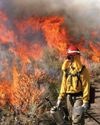
Muse Science Magazine for Kids
WOMEN AND FIREFIGHTING: A GOOD FIT
Jessica Gardetto is a firefighter. Her father was, too. “I grew up with my dad coming home smelling like wildfire and covered in soot,” she says.
1 min
Muse July 2025: The Story Behind Wildfires

Muse Science Magazine for Kids
What is happening on your fingertips when they get all wrinkly in a hot tub?
—Felix G., age 10, Montana
1 mins
Muse July 2025: The Story Behind Wildfires

Muse Science Magazine for Kids
WHEN the SMOKE CLEARS
THE LINGERING EFFECTS OF THE RECENT PACIFIC PALISADES AND ALTADENA EATON FIRES
6 mins
Muse July 2025: The Story Behind Wildfires

Muse Science Magazine for Kids
PICKING TEAMS
Keep it fair with a strategy that relies on geometry.
2 mins
Muse July 2025: The Story Behind Wildfires
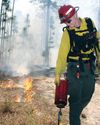
Muse Science Magazine for Kids
SHAN CAMMACK
WILDLIFE BIOLOGIST AND FIRE SAFETY OFFICER
3 mins
Muse July 2025: The Story Behind Wildfires
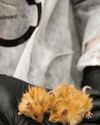
Muse Science Magazine for Kids
Scientists Create Mice With Woolly Mammoth-Like Fur
RESEARCHERS AT A COMPANY IN TEXAS ARE WORKING TO CREATE A LIVING ANIMAL THAT RESEMBLES THE EXTINCT WOOLLY MAMMOTH. Recently, they produced mice with traits of the large mammal. The mice all have coats with mammoth-like fur, and some of the small mammals also have genes that help them store fat. Both features would help the animals survive in the cold Arctic, where the woolly mammoth once lived.
1 min
Muse July 2025: The Story Behind Wildfires

Muse Science Magazine for Kids
Cool Sunshade Added to the Nancy Roman Space Telescope
THE NANCY ROMAN SPACE TELESCOPE IS A NEW TELESCOPE THAT NASA IS BUILDING AND WILL LAUNCH INTO SPACE, LIKELY IN EARLY 2027.
1 min
Muse July 2025: The Story Behind Wildfires
Translate
Change font size

